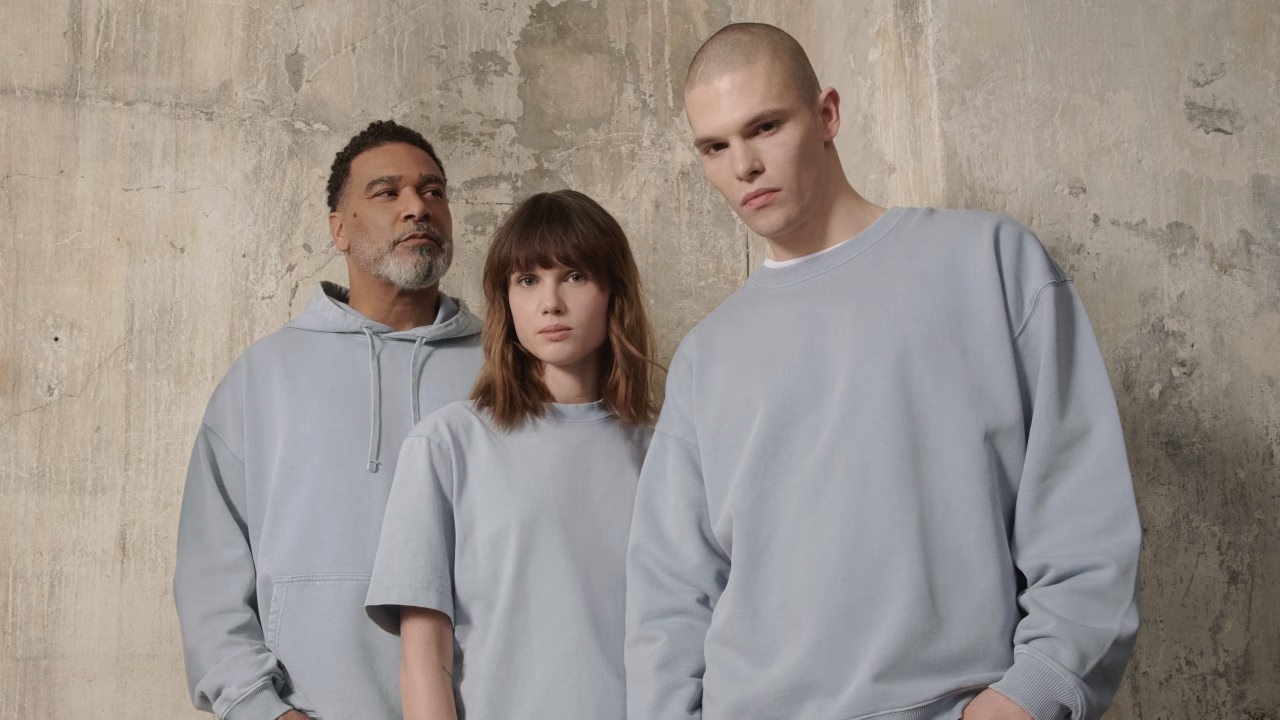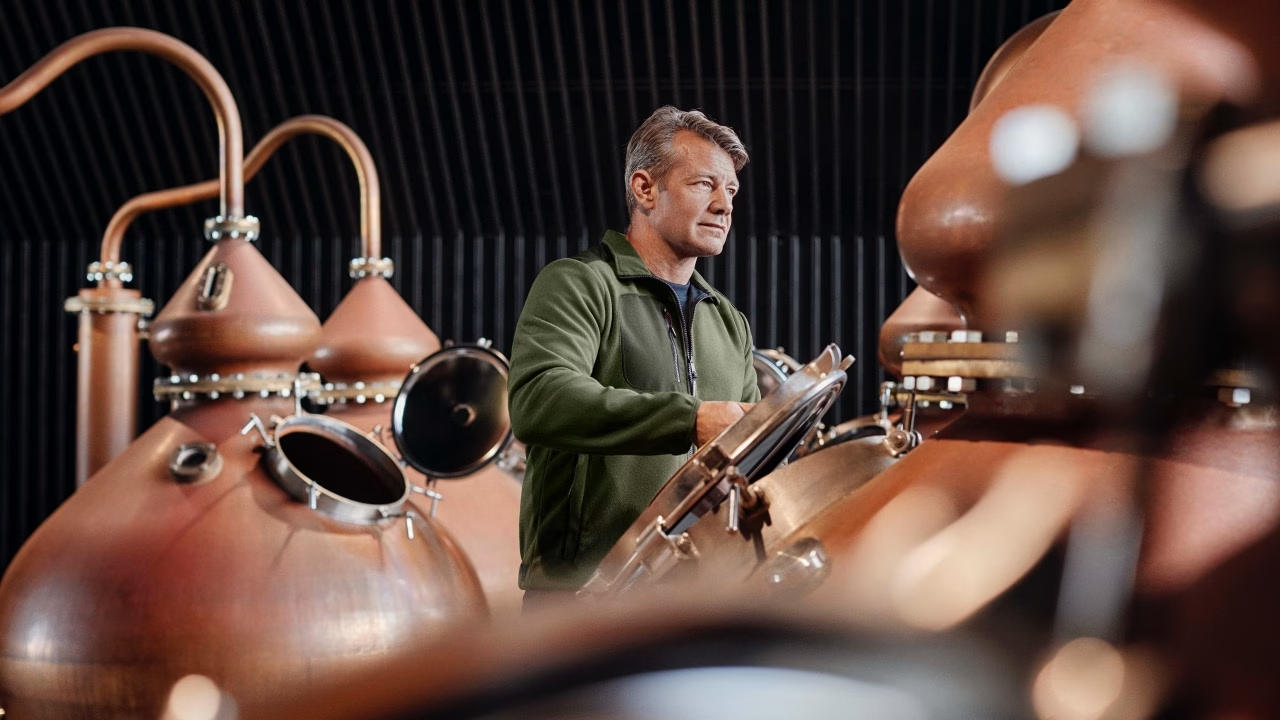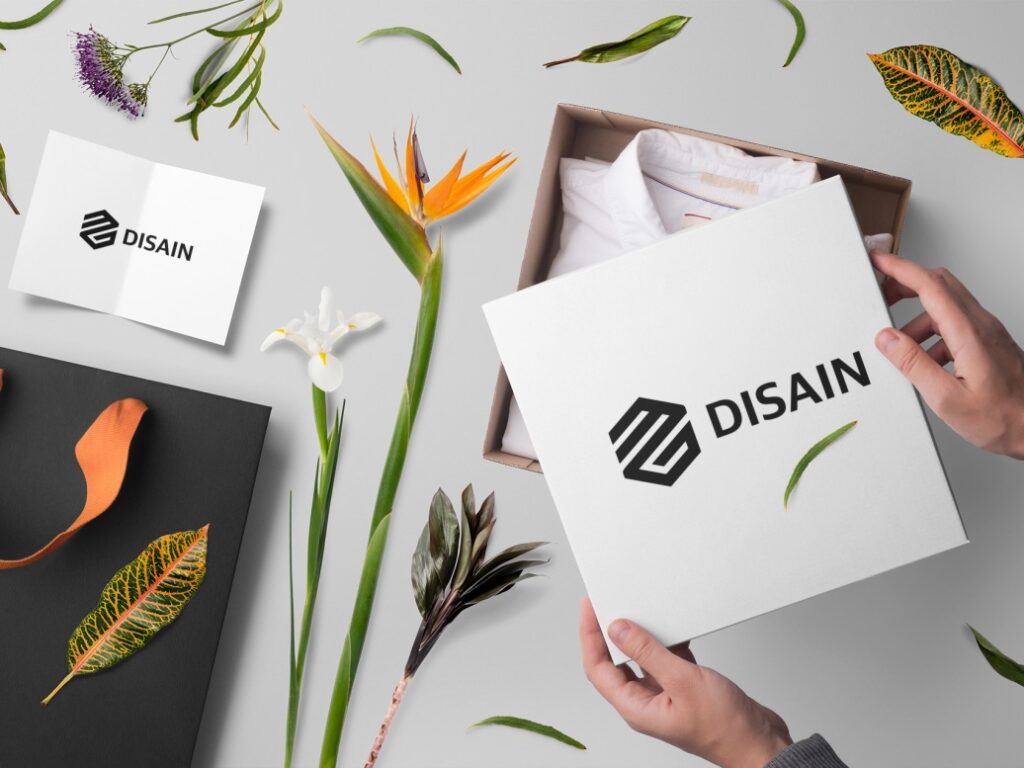
Stanley/Stella – reklaamriided teie brändile
Stanley/Stella on Euroopa juhtiv premium-klassi ja jätkusuutlike reklaamriiete tootja, mis on pühendunud innovatsioonile, kvaliteedile ja keskkonnasõbralikkusele. Nende eesmärk on pakkuda
Pärnu mnt 24b, Viljandi, Eesti
Kas otsite pikaajalisi trükitooteid, millel on erinevad värvid ja kõrge eraldusvõime? Parima kujundusega graafilised rõivad, kodukaunistus ja reklaamkuvarid kasutavad värvilise sublimatsiooni protsessi, et saavutada elav ja igavene graafika.
Kogu teave, mida peate teadma, on saadaval selles põhjalikus juhendis.
Kuigi nimi võib muuta protsessi keeruliseks ja tehniliseks, on seda tegelikult üsna lihtne mõista.
Sublimatsiooni määratlus: kui tahke materjal muutub gaasiks ilma vedelat faasi läbimata.
See tähendab, et kunstiteos kantakse värvi sublimatsioonitrüki ajal kõrge temperatuuriga kuumpressi kasutades üle gaasiseisundiga objektile. See erineb traditsioonilistest trükimeetoditest, kuna jätab vedelikuetapist välja. Trükitud objektile ei kanta märga tinti ja ei oodata selle kuivamist.
Pilt prinditakse esmalt prindipaberile, muutes kogu protsessi värviliseks sublimatsioonitrükiks kiireks ja lihtsaks. Seejärel kasutatakse kuumust pildi ülekandmiseks sublimatsioonipaberilt objektile.
Ettevõtted ja kodukujundajad kasutavad seda trükistiili rõivaste graafika loomisel, samuti märgistuste, kodukaunistuste, ettevõtte eksponaatide ja isiklike esemete, näiteks rannasõidulaevade, kohvikruuside ja võtmehoidjate jaoks.
Värvide sublimatsioonitrükk ettevõtetele: millistele toodetele saate printida?
Allpool on loetelu kasumlikest esemetest, mida ettevõtted sublimeerivad:
Jäigad aluspinnad-polümeeriga töödeldud esemed, mis sisaldavad mittekangast esemeid, nagu klaas, plast, klaaskiud ja alumiinium. Need on tooted, mis ei ole painduvad nagu kangad.
Tühjad jäigad tooted – Paljud neist materjalidest on saadaval hulgihinnaga hulgiostudeks, näiteks kohandatud hiirepadjad, mobiiltelefonikarbid ja jooginõud. Mõnikord nimetatakse neid toorikuteks, mis on tooted ilma kujunduse või trükita, et oleks võimalik isikupärastada.
Sildid-ideaalne e-kaubanduse ettevõtetele kiireks printimiseks. Printige hõlpsalt vinüülile, et luua ülestõstetavaid bännereid ja muid messiesitlusi. Kui näete kaupluste või hoonete ees rippuvaid silte, on suur tõenäosus, et kasutati sublimatsiooni.
Polüesterkangad – üks populaarsemaid esemeid sublimaadi värvimiseks. Need on jagatud kahte tüüpi:
Polüestritooted, mis ripuvad ja voolavad nende loomulikus keskkonnas, näiteks rõivad, lipud, bännerid ja kohandatud trükitud kaaned.
Vastupidavamad tooted, näiteks kohandatud kotid, kangast taustad ja kohandatud telgid.
Kodukaunistus-värvainete alamprotsessi kasutavad sageli ettevõtted, kes müüvad sisekujundajatele. Sellised kaunistused nagu keraamilised põrandaplaadid on populaarne valik vannitubades, köökides, restoranides ja mujal.
Fotode printimine-vaieldamatult parim viis lõuendile, magnetitele ja rõivastele kõrgeima kvaliteediga fotopiltide loomiseks.
Kui soovite parima väljanägemisega trükitud komponenti, on õige tee värvisublimatsioon.
Seda meetodit kasutades ei pragune ega kulu pildid pärast mitut kasutuskorda ning visuaalid kestavad nii kaua kui vaja.
See on väga oluline nende esemete kasutamisel, mida aja jooksul pidevalt kasutatakse. Seda tüüpi printimisest saavad kasu igapäevased esemed, näiteks hiirepadjad, köögitarbed ja kohandatud trükisärgid. See kehtib eriti rõivaste ja voodipesu kohta, kuna neid saab regulaarselt pesta, kartmata nende välimust moonutada.
Kui sublimatsiooni on vaja teha polüestrist või polümeerkattega esemetest, võib siiditrüki rakendada kõigele, kui pind on tasane. Kuigi see avab ukse rohkematele kangastele, näiteks puuvillale, ei tehta siiditrükki tavaliselt jäigematel pindadel, nagu kruusid või tekstureeritud plaadid. Selle põhjuseks on asjaolu, et parima tulemuse saamiseks on vaja tasasemat pinda, vastasel juhul võib pilt olla moonutatud. Sellepärast tehakse seda trükivormi tavaliselt rõivastele ja piirdutakse tavaliselt ühe värviga kujundusega. Seevastu sublimatsioon tuleb kõige paremini välja, kui kasutatakse rohkem värve ja kujundused võivad olla väga üksikasjalikud.
Sublimatsioon pakub rohkem ruumi loovusele ja ainulaadsele soovile
Kuna klaas võib kergesti puruneda, on oluline olla värvisublimatsioonitrüki kasutamisel ettevaatlikum. Kuumpressi tuleb hoolikalt kasutada. Kuumpressipadi võib klaasile lisakatte pakkuda, kuid see pole vajalik.
Teine asi, mida tuleb klaasile printimisel meeles pidada, on see, et klaasi soojenemise viis erineb tavapärasematest kangastest, mida sageli kasutatakse. Aeg -ajalt võib kuumus tekitada prindis uduseid sektsioone, seega võib selle probleemi lahendamiseks kasutada pooltoone.
Teine lahendus probleemile on tekstureeritud materjali kasutamine, mis jätab selgema pildi mulje. Midagi muudab selle lähenemisviisi teistsuguseks see, et tint tuleb sublimeerida õige lugemise stiilis, kuna trükk kandub klaasi tagaküljele ja seda vaadatakse teiselt poolt. Muud materjalid nõuavad pildi sublimeerimist peegelpildis.
Plastmaterjalidele printimine võib nõuda erinevat tüüpi tehnoloogiat. Kui kangaste ja muude lamedamate pindade jaoks kasutatav kuumpress on tasapinnaline press, siis 3D -objekti sublimatsiooni printimisel on selle asemel vaja ahjupressi.
Teine muudatus on see, et pilt trükitakse pigem kilele kui paberile, mis on prinditavale objektile paremini vormitav.
Viimane asi, mida tuleb kaaluda, on see, et ese peab taluma umbes 400 ⁰F kuumust ilma rikkumata. See võib plasttoodete puhul olla haruldasem kui kangas ja klaas.
Alumiiniumist või metallist esemete kasutamine võib luua väga dünaamiliselt trükitud pildi. Kvaliteetsete materjalide valimine printimiseks pakub parimaid tulemusi.
Kõige ilusama efekti saavutamiseks tuleks osta tõhus sublimatsiooniprinter. Soovitatav on kaheksavärviline seade.
Midagi, mida tuleks meeles pidada, on see, et trükkimisel asetatakse metallid tavaliselt sublimatsioonipaberi peale, mitte alla. Veenduge, et pilt jääb materjalile korralikult asetamata, ilma kuumlinti kasutamata.
Üldiselt peab olema kindel, et kuumus puudutab otse metalli ja paberit.
Peamine erinevus värvisublimatsiooni kasutamisel lõuenditel on see, et lõuendeid saab kujundada venitamiseks. Seda protsessi nimetatakse galerii mähiseks, kui lõuendiprint rullitakse ümber kaadri tagakülje, nii et vaatajad ei näe lõuendi kinnitamiseks kasutatavaid tööriistu.
Tuleb meeles pidada, et küljed on nähtavad ja neile tuleb trükkida kas esipildi jätkamine või sama pildi kordamine. Kui kasutate seda galerii pakkimisstiili, peaks lõuendimaterjal olema raamist suurem, et see hõlpsalt veniks.
Kuumpressi kasutamiseks valmistudes on väga oluline veenduda materjali puhtuses. Seda saab teha ebemerulli abil.
Sublimeeritud trükitehnoloogia on laienenud isegi puidust esemetele, mis jätab välja veelgi avatumaks selle jaoks, mida saab printida. Kuigi puit ei sisalda polüestrit, nagu paljud teised tooted, saab seda rullikute ja kuumuse abil katta polüainega.
Kui see on tehtud, on sublimatsiooniprotsessi lõpuleviimine sarnane teiste polüestermaterjalidega töötamisega. Kattekiht võib lubada kuumpressi kasutamist madalamal temperatuuril kui tavaline 400⁰ enamus teisi tooteid. Seda tuleks uurida, kui kasutate teatud katet puidul.
Kuigi akrüül ei ole polüestripõhine, on olemas sublimatsiooniakrüül, mida saab kasutada värvisublimatsiooniprotsessis. Seda toodet saab kasutada koos tavapärase kuumpressi ja ülekandepaberiga ilma rikkumata. Sublimatsiooni akrüüli müüakse saitidel ja kauplustes, kus müüakse trükimaterjale ja -masinaid.
Vinüül -sublimatsiooniprotsess toimub peaaegu samamoodi nagu teiste materjalidega. Peamine erinevus vinüüliga on see, et seda kasutatakse kuju järgi lõigatud toodetel.
See kehtib sageli toodete kohta, mis kasutavad kleepuvat liimi, näiteks seina- ja põrandakleebised. Seda tehakse enne sublimeeritud printeri kasutamist kujundusfailil soovitud kujutise silueti lõikamisega.
Kui on aeg sublimeerida, lõigatakse vinüül õige kujuga. Lõikamine peaks toimuma trükise servade lähedal. Sõltuvalt suurusest saab korraga trükkida ja eraldi lõigata rohkem kui ühe vinüültoote.
See on kõige raskem materjal sublimeeritud trükkimiseks. On palju erinevaid nailonitüüpe, millest igaüks reageerib sublimatsiooniprotsessile erinevalt. Nailon 6 on tüüp, mida kasutatakse tekstiilides kõige sagedamini.
Midagi, mida nailonprintimisel meeles pidada, on see, et seda tuleb proovida ja katsetada, et näha, mis on kõige atraktiivsem tulemus. Laialdaste valikute jaoks on ainulaadseid tulemusi. Üks kasulik nõuanne oleks kasutada madalamat temperatuuri.
Vaadake, värvainete sublimatsioon võib olla kulukam kui soojusülekande printimine, kuid see loob parema välimuse, mida saab kasutada aastaid.
Võimalused, millele printida, on palju laiemad kui muude taskukohasemate trükiprotseduuride puhul, jättes rohkem ruumi uuendustele.
Kui soovite midagi, mida tuleb kasutada lühikese aja jooksul, siis võib soovitada midagi soojusülekannet.
Kui aga soovite printida midagi, mis on ette nähtud pikaajaliseks säilitamiseks, ja kavatsete seda pesta, et see säiliks puhtas seisukorras, siis on parim valik värvainete sublimatsioon.
Lingid:

Stanley/Stella on Euroopa juhtiv premium-klassi ja jätkusuutlike reklaamriiete tootja, mis on pühendunud innovatsioonile, kvaliteedile ja keskkonnasõbralikkusele. Nende eesmärk on pakkuda

ID® Identity on Taani päritolu ettevõte, mis on alates 1983. aastast pühendunud kvaliteetsete korporatiivrõivaste loomisele. Nende eesmärk on tugevdada ettevõtete

Võtke meiega julgelt ühendust ja vastan meeleldi kõikidele teie küsimustele.